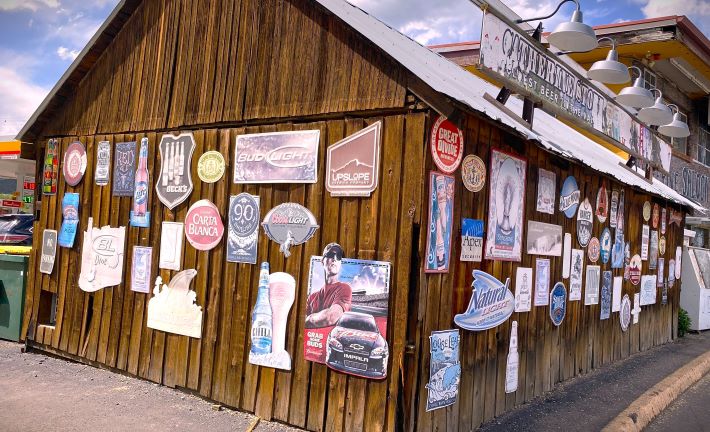
The lead gets right to the point: “The ground is shaking under some of the most important beer brands for a trio of California’s largest brewers.” The breweries are Sierra Nevada Brewing Company, Firestone Walker Brewing Company, and 21st Amendment Brewery.
Why should this matter to us beer drinkers?
You will have to answer that yourselves. I am writing zero words rather than 1,000. Instead I will point you at Flagship February. (At least, I hope the link takes you to one of the pages in the Flagship February website and you can make your way around. Simply typing in flashipfebruary.com will not get you there. Nothing seems to be going right for flagship beers right now.)
You might also enjoy
Could an ancient, climate-friendly crop be the future of beer?
Fonio sounds too good to be true.
“Growing a pound of malted barley has a 327-gallon water footprint while a pound of wheat requires 219 gallons of water, and a pound of white rice requires 400 gallons of water.
“Meanwhile, fonio can thrive with just 600mm annual rainfall, and none of the irrigation, pesticides or fertilizers needed by other grains. Brewing with fonio follows the same process as making beer from other grains.”
In fact, this could be a problem: “Cleaning the sand out of fonio is a time-consuming, manual process that requires beating the grassy fonio paddy to release the grain, and using a lot of water to rinse out dirt and sand.”
Something to watch.
How Far Will Salmon Swim for a Craft Beer?
It appears that salmon prefer yeast trub to extract of shrimp, tincture of watercress, skin of steelhead, or bile of minnow. The beer connection aside, really fascinating stuff going on at the Oregon Hatchery Research Center.
The Inextinguishable Appeal of Draught Bass
Lyme Regis. 1994. As soon as we were checked in at the Angel, publican Ed Bignal took time to point out the sights, such as the Leper’s Well a block away. Lepers once lived along the Angel’s street, Mill Green, a narrow alley on which monks had led horsedrawn carts centuries ago.
First off, we went to the Volunteer because Bignal assured us the Bass would be in as good of condition as we could find anywhere. He did not lie. “Bass is a beer that lodges in the mind” was flat out true that day.
(Early in the evening, we saw him step from behind the bar and go outside to check a tire because one of his female customers was worried it was going flat. After dinner, the place was bustling. Patrons constantly paraded between the skittles alley out back and the back door to the pub, where they refilled their pints. When the skittles shut down, the singing began.)
Craft brewery boom in Switzerland draws to a close
“Boom draws to a close” means a period of hyper-growth has ended, not that the Swiss suddenly abandoned fancy beer. It is not surprising that 90 percent of all breweries are nano-breweries. They are “often run as a hobby.”
Pairing seasonal beer and seasonal produce
Not new, but it hit my feeder aggregator this week. Some specific suggestions: LAGER: Grilled corn-on-the-cob with chili and lime; WHEAT BEER: Watermelon and tomato salad; IPA: Pico de gallo and chips.
Gummies Beer
Tantalizes the taste buds. 19.2 ounces at a time.
House beers
“This latest iteration of house beers has proven successful because they’re not a novelty.”
Maggie Harrison’s War on Wine
Now, this is a tasting note. Something you’d expect to hear in “Drops of God.”
“First, it made me see colors: the inkiest indigos and the bluest blacks, streaked with fissures of silver. Then I pictured something lurching out of a cave on a moonless night during a thunderstorm, which made the hairs on the back of my neck stand up.”
Do the beers you drink make you see colors? Asking for a friend.
It’s interesting that the article you lead with (but didn’t link to? I assume it’s the Kate Bernot article?) doesn’t define flagship, unless they mean “best-selling.” I still assume Pale Ale is Sierra Nevada’s flagship, and, dunno, DBA would be Firestone’s flagship (though it took them forever to enter my market, and they led with the more American-hopped IPAs before 805 took off). Don’t know enough about 21st Amendment.
Anyway, for old fellas like me, it is tougher and tougher to find SNPA in the Midwest, and I have to ask my local store to bring in Bigfoot. I remember someone asking on one of the beer message boards in the mid 2000s what period of beer history folks would want to live in and thinking that I was living in it… and 15-20 years later, with the changes in styles to less bitter IPAs and more adjunct-laden sweet stouts, and the falling out of favor of the styles I loved… I guess I’d now answer “I want to go back 15-20 years”!
Oops, I meant to include that link. Now I have. Thanks, Bill.
Yes, GBH is using flagship as a synonym for best selling. Hazy Little Thing outsells SNPA in national chains. I would be curious to see a survey of drinkers asked to name Sierra Nevada’s flagship. Would drinkers older than x say SNPA and younger than x say Hazy whatever?
I’m happy to drink in the current era. Finding clear, properly hoppy IPAs is not hard, and number of quality pilsners and nicely balanced mixed ferm beers is much higher.